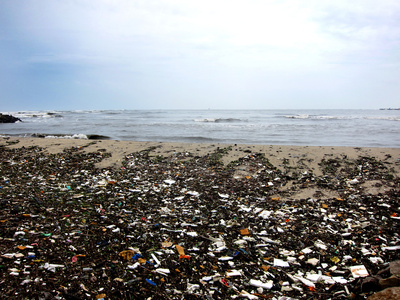Land-based sources account for a massive 80% of marine litter in Europe, and approximately 85% of it is plastic, according to the EEA web report ‘From source to sea — The untold story of marine litter‘
Packaging and small plastic items make up nearly 80% of this plastic waste. The new EEA report is the first Europe-wide study of its kind, taking a holistic look at how this litter is created and ends up in our European seas via our rivers.
The report offers ten recommendations to boost knowledge to complement already stepped-up action by the European Union through the EU’s Zero Pollution action plan, the Circular Economy action plan (including the Plastics Strategy), the Marine Strategy Framework Directive and Single-Use Plastic Directive.
Plastic waste still growing
Despite these measures, data shows that plastic waste generation is growing faster than economic growth. Continuous increase in plastic waste generation is still exerting too much pressure on European coasts and seas. And that the European Union is currently not on track to meet its policy goals of significantly reducing waste in its shift to a circular economy, which aims to massively reduce the amount of plastics and packaging that are currently thrown out.
Between 2011 and 2020, plastic waste generated in the EU’s 27 Member States per person increased by 22%, as did the amount of mismanaged plastic waste. Most used and discarded plastic items are either recycled, incinerated, or stored in waste facilities, but due to limits in waste management capacity, a portion still makes its way into our seas and oceans, making it the primary source of marine litter. This uncollected waste is taken to our coasts via Europe’s many rivers. The outcome is that 75% of assessed marine areas are polluted. This is a huge problem because of plastic’s impact on marine life and on human health via the food chain. In some cases, the persistent nature of plastic means that it can last up to 500 years in the environment.
What we need to know to act
To achieve Europe’s green goals, and specifically, waste prevention, reduction and management goals, a full understanding of marine litter is needed — from source to sea. We also need to decouple waste generation from economic growth. Efforts in Europe to improve waste collection and management have made some headway in reducing the share of mismanaged small non-packaging plastic items (PPSI) waste. To find solutions, EU legislation is moving to a more integrated approach based on monitoring, which could be supported by improved data gathering and analysis on land and rivers. Most marine litter is generated on land, and the reliability of waste management data are limited, and plastic litter transported via rivers remains understudied.
The recommendations focus on better use of existing and emerging data sources to better monitor problem areas, which can help develop targeted measures.
Old-fashioned clean-ups and physical monitoring by volunteer citizen scientists are also invaluable. Technology also plays an increasingly important role. Remote sensing via satellites, planes, drones and artificial intelligence can help make sense of the ‘big data’ collected.
Waste leakage and river litter estimation models are just as important as fine-grained data collection and monitoring activities. The use of these tools are needed to drive political decision-making in countries and communities facing the biggest waste mismanagement problems.











